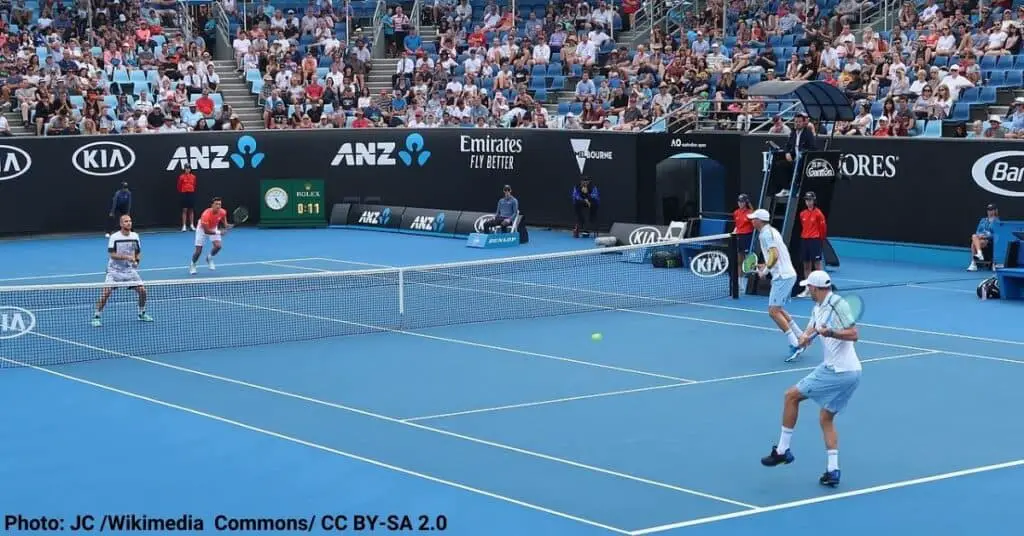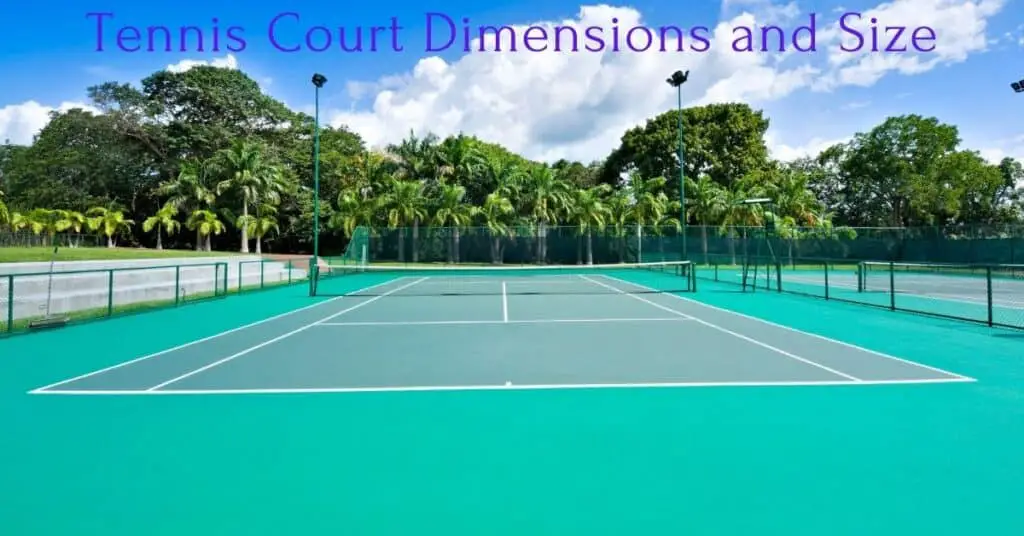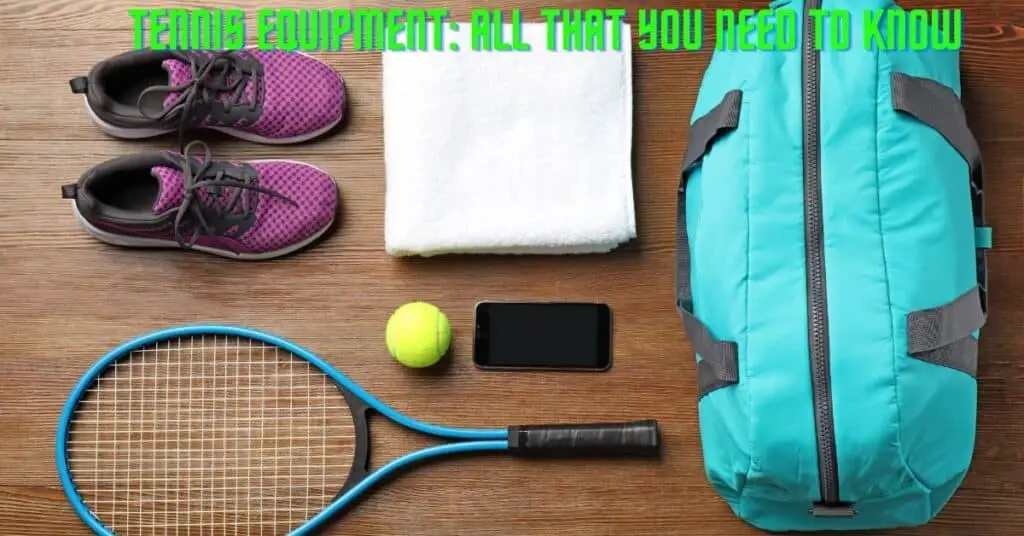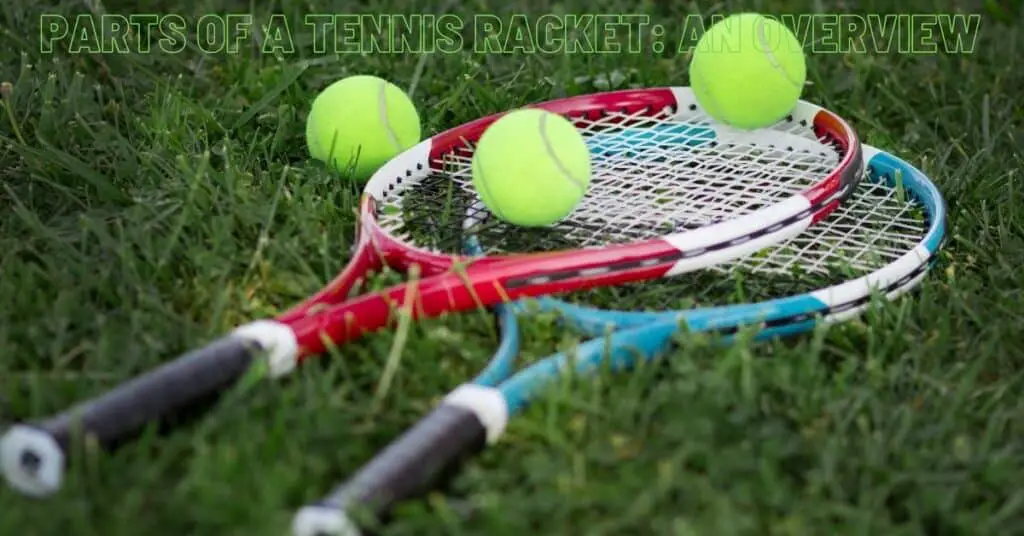Before going to the tennis rules, let’s have a quick recap on the game of tennis.
What is Tennis?
Tennis is a sport that involves two or four players for singles and doubles games respectively. It is played on a surface marked with specified dimensions called the tennis court.
The game is played with the help of a stringed racket that hits a ball to cross over the net with the intention of landing on the specified area of the opponent’s side. It looks simple! Yes, but it must follow the rules and regulations governed by the International Tennis Federation (ITF)
Rules in Tennis
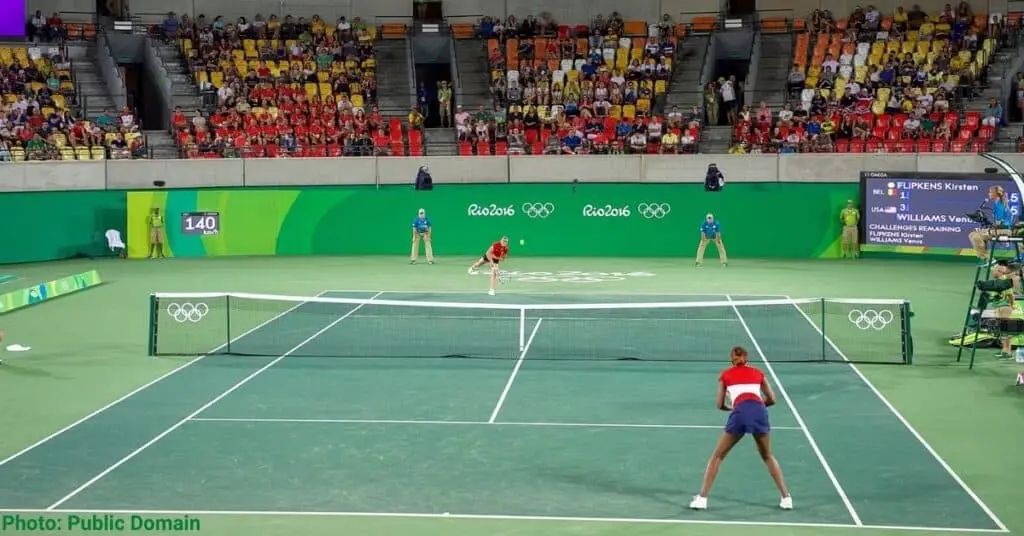
Let’s look at the tennis rules that are essential to follow in the game.
A singles tennis match consists of the best of 3 or 5 sets. Each set consists of some games and the game consists of points.
General Rules in Tennis
The game of tennis is played on a surface called a tennis court. There are different types of courts, it may be a hard court, clay court, or grass court. The dimension of a tennis court is 78 ft x 36 ft (23.8 m x 11 m) which includes markings for both the singles (78 ft x 27 ft or 23.8 m x 8.23 m) and doubles play. The court is divided into two equal parts by a net.
- The players/ teams stand on the opposite side of the net. The server is the player who serves the ball for the first point of the game. The receiver is the player who returns the ball played by the server.
- Before the start of the play, the choice of side or service is decided by conducting a toss. The side winning the toss may decide:
- To serve/ receive first (The losing side then opts for any of the remaining choices)
- Any particular side of the court to start the match (The losing side then opts for any of the remaining choices)
- Players change ends after every odd number of games, like 1, 3, and so on. They also change ends after every set unless the total number of games in that set is even.
- During a tie-break, players/teams change ends after every 6 points.
- If the ball touches the line within the specified area, it is a valid serve/ return.
- The player must return the ball before it bounces twice.
- The player is not allowed to hit the ball before it has passed the net.
Tennis Scoring Rules in a Game
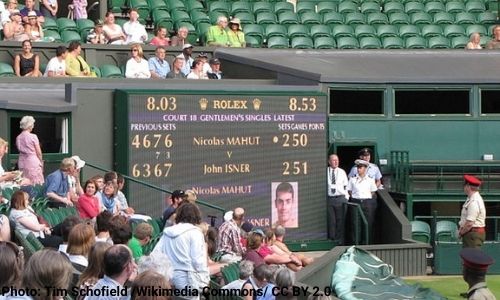
In tennis, there are two types of games. One is the standard game and the other one is the tiebreaker.
In a standard game, a two-point margin is necessary to win the game. But when the game reaches a point of equality like 6-6, then the result of the game is decided by a tiebreaker.
Standard Game
In a standard game, the scores are as follows where the score of the server comes first.
| Start/ No Point | Love (0) |
| First Point | 15 |
| Second Point | 30 |
| Third Point | 40 |
| Forth Point | Game |
A server starts the game with “love”. If he wins the point in the first serve, the score becomes 15-0. If the opponent wins the point the score will become 0-15. The game continues in this pattern, till either one of the players reaches the third point, i.e. 40. Then whoever wins the fourth point, wins the game.
But if the score comes to 40-40, this point of equality is called “Deuce”. At “deuce”, a two-point lead is a must to win the game. The next point of the deuce is “Advantage”. If a player wins the next point after getting the advantage, wins the game. But, if the opponent player wins that point, the game again comes to a “Deuce”. The game continues in this fashion till any of the players gets the two points lead to conclude the game.
Tie-break Game
When there is a game of equality at 6-6, the situation of tie-break arrives. The player wins the tie-break game and wins the set at 7-6.
In a tie-break game, the points are “0”, “1”, “2”, and so on. The player who first reaches 7 points with a 2-point lead, wins the game and the set. The game may go beyond 7 points if the 2-point lead is not achieved.
The player whose turn is to serve will serve the first point. Then the opponent Player (in doubles, the player of the opposite team who is due to serve) will serve the next two points. After that, every player/team will serve 2 consecutive services till the tie-break ends.
The player/team that serves the first point in the tie-break, will be the receiver in the next game.
Score in a Set and a Match
In singles, a set may be two types, “Advantage set” or “Tie-break set”. Prior to the event, the type of set to be used to conclude a game is to be mentioned. For the “Tie-break set” method, it is also to be mentioned whether the final set will be played as an “Advantage set” or “Tie-break set”.
Advantage Set
In the advantage set, the player who first wins 6 games with a minimum lead of 2 games, wins the set. If the 2-game lead is not achieved up to 6 games, the set will continue until the 2-game lead is not achieved.
Tri-break Set
If the set comes to equality of 6 games each, the tri-break set will come into action following the rules of tri-break as mentioned above.
A match consists of the best of 3 or 5 sets.
Service Rules in Tennis

- The server shall start serving in a game from the right half of the court.
- The server shall release the ball by hand and hit the ball with the racket before it touches the ground.
- After the service, the first bounce of the ball must be on the service court of the receiver’s end.
- The service shall pass over the net and strike on the diagonally opposite service court.
- At the end of each game, the server shall become the receiver and the receiver shall become the server for the next game.
- If the server misses the ball when trying to hit it, it is a service fault.
- If the ball touches the server, or his partner, or the net post before hitting the ground, it is also a service fault.
- The server shall not serve until the receiver is ready.
- If the first service is a fault, the server has a second and final chance to serve again.
- But if the server does two consecutive faults, he loses the point.
- The receiver can’t return the service before it bounces.
- The right side and left side of the court with reference to the center line are called the “Deuce Court” and “Ad Court” respectively.
Foot Fault
In the following circumstances, the server may be trapped in a foot fault.
- If he changes position by walking or running at the instant of hitting the serve.
- If he touches the baseline or the court with either foot.
- In case he touches the imaginary extension of the center mark with either foot.
- If he touches the imaginary extension of the sideline with either foot.
Let During a Service
“Let” is the situation in the service, when the server has to serve again.
- If the ball touches the net but is otherwise good, it is a “Let” in service.
- If the receiver is not ready at the time of service.
The Importance of “Let in Tennis”: Understanding its Impact on the Game
Serving Order
In a singles match, the rotation of serves continues after the completion of each game till the end of a set. If A serves for the 1st game, B will serve for the 2nd game, A will again be the server for the 3rd game, and so on.
- Game 1: Player A
- Game 2: Player B
- Game 3: Player A
- Game 4: Player B and so on
But in the tiebreaker, the serving order is a little bit more complicated. If in a singles match, player A is the receiver in the last point, he will serve the opening point of the tiebreaker.
- Point 1: Player A (Deuce side)
- Point 2: Player B (Ad side)
- Point 3: Player B (Deuce side)
- Point 4: Player A (Ad side)
- Point 5: Player A (Deuce side)
- Point 6: Player B (Ad side)
- Point 7: Player B (Deuce side)
- Point 8: Player A (Ad side)
One another noticeable point is that each player will have to change ends after the completion of 6 points or its multiple, i.e 12, 18, and so on. In the above example, player B will serve the 7th point from the end just opposite the end of the 6th point.
Doubles Rules in Tennis
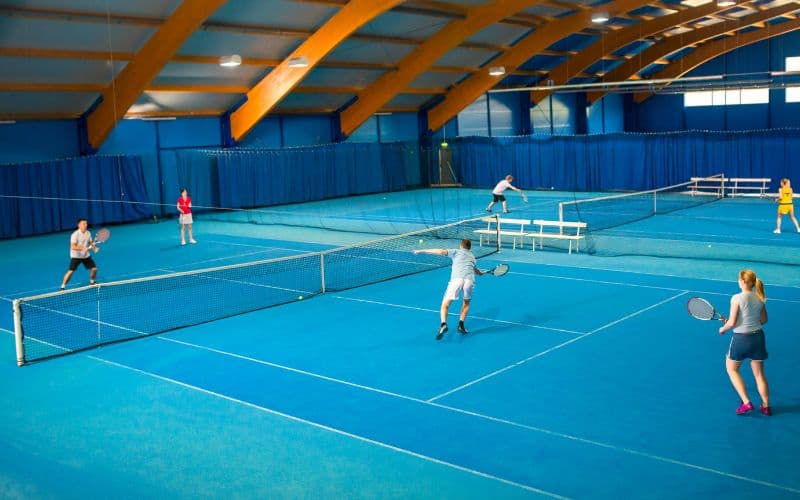
Every rule in doubles is the same as in singles with a minor variation in some rules.
- In the doubles, the area for returning the ball is larger as it extends up to the doubles sideline.
- For the first game, the doubles team due to serve shall decide which player shall serve first. The other player shall serve the next odd game. Suppose, in a team of A and B, if A serves in the 1st game, then B shall serve in the 3rd game.
- Similarly in the opponent team combined with C and D, if C serves the 2nd game, D shall serve the 4th game.
- At the time of receiving, the team due to receive the service shall decide which player between them shall receive the first point. The other player of the team shall receive the service for the second point.
- Similarly, before the second game, the other team shall nominate which player between them shall receive the first point.
- This rotation shall continue till the set ends.
Serving Order in Doubles
In a doubles match, each team has the opportunity to select the player who will serve or receive first. But once started, the rotation of serves can’t be changed in the entire set or tiebreaker.
Let’s suppose team A (players A1 & A2) is the server after winning the toss whereas team B (players B1 & B2) is the receiver.
The serving order in the set will be as follows.
- Game 1: Player A1
- Game 2: Player B1
- Game 3: Player A2
- Game 4: Player B2
- Game 5: Player A1
- Game 6: Player B1
In the tiebreaker, the serving order will be:
- Point 1: Player A1 (Deuce side)
- Point 2: Player B1 (Ad side)
- Point 3: Player B1 (Deuce side)
- Point 4: Player A2 (Ad side)
- Point 5: Player A2 (Deuce side)
- Point 6: Player B2 (Ad side)
- Point 7: Player B2 (Deuce side)
- Point 8: Player A1 (Ad side)
- Point 9: Player A1 (Deuce side)
FAQs
In tennis, “Love” means “Nil”. When a game starts, we call it “Love All”, which means the game starts with a score of 0-0. In a game, when the score is 40-0, it is termed ” Forty love”. Similarly, when a set ends at ” Six Love”, the score is actually 6-0.
When a server delivers the legal service and the receiver is unable to touch the ball with his racket, then the service is termed an ace service. To produce an ace service, a server always has to be precise with the ball placement. An ace service always results in a point for the server.
“Let” is a situation when a service clips the net but bounces within the service court of the opponent. When there is “Let”, the point is replayed.
There is no limit on the number of let services in tennis.
When the game reaches a situation of 40-40, it is a deuce in tennis. At the point of deuce, a player has to win two consecutive points to win the game.
After the score is 40-40, i.e. deuce, the player who wins the 1st point, gets the advantage in the game. After getting the advantage, if he gets the next point, he will win the game. But if the player loses the point, the game again comes to deuce. The game goes on until any of the players gets two consecutive points.
The “Breakpoint” is the point that gives a receiver the chance to win the game (break the service) by winning the next point.
When a server commits two consecutive mistakes in the 1st and 2nd service, then it is a double fault in tennis. As a result, the receiver will win that point.

